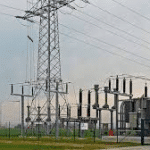Are you ready to harness the power of the sun and save on your energy bills? Look no further!
In today’s blog post, we have all the answers you need to choose the perfect installing solar panels on roof. With so many options out there, it can be overwhelming to make a decision. But fear not! We’ve got your back with expert tips, comprehensive guidance, and insider secrets that will empower you to find the right solar solution tailored specifically for your home.
Understanding Solar Panel Systems
Solar panel systems have gained popularity in recent years as a sustainable and cost-effective option for powering homes and businesses. However, with the various types and options available, it can be overwhelming to understand how they work and which system is best suited for your roof. In this section, we will dive deeper into the basics of solar panel systems to help you gain a better understanding before making your decision.
The main components of a solar panel system include the solar panels themselves, inverters, mounting racks, wiring, and a monitoring system. Solar panels are made up of photovoltaic (PV) cells that convert sunlight into electricity. These cells are typically made from silicon and have anti-reflective coatings to increase their efficiency. The number of panels needed for your system will depend on your energy needs and the size of your roof.
Mounting racks support the weight of solar panels on your roof while also ensuring proper tilt angles for maximum sunlight absorption. They can either be fixed or adjustable depending on your location’s sun exposure throughout the year.
Wiring connects all components together in a series circuit to transfer electricity from the panels through the inverters and into your home’s electrical system or back onto the grid. It is crucial to ensure high-quality wiring is used to avoid any potential fire hazards.
The monitoring system tracks your solar panel system’s performance and provides real-time data on energy production. This allows you to monitor your system’s efficiency and identify any potential issues that may need to be addressed.
Types Of Solar Panels
- 1. Monocrystalline Solar Panels:Monocrystalline solar panels are made from a single silicon crystal structure, giving them a uniform dark black color. They have the highest efficiency rate among all types of solar panels, typically ranging from 15-20%. This means that they can convert more sunlight into electricity compared to other types of panels, making them ideal for smaller roofs where space may be limited.
- 2. Polycrystalline Solar Panels: Polycrystalline solar panels are made from melted silicon crystals poured into square molds. They have a blue speckled appearance and slightly lower efficiency rates (13-16%) compared to monocrystalline panels. However, their manufacturing process is less expensive, making them relatively cheaper than monocrystalline panels.
- 3. Thin-Film Solar Panels:Thin-film solar panels use layers of photovoltaic material such as amorphous silicon or cadmium telluride instead of crystalline silicon cells used in traditional solar panels. They have a lower efficiency rate (around 11%), but they are much thinner and flexible than other types of panels, allowing for easier installation on irregular or curved roofs.
- 4. Bifacial Solar Panels: Bifacial solar panels can absorb sunlight from both sides by using bifacial cells that allow light to pass through the panel and reflect off surrounding surfaces onto the backside of the panel. This technology increases their efficiency rates (up to 30%) and makes them suitable for installations with open spaces or reflective surfaces.
- 5. Building-Integrated Photovoltaics (BIPV):BIPV panels are designed to replace traditional building materials such as roof shingles, tiles, or windows, making them an aesthetically pleasing option for homeowners. They have a lower efficiency rate (around 10%), but their integration into the structure of the building can provide additional cost savings.
Sizing Your System For Your Roof
The first step in sizing your system is to determine your energy needs. This can be done by looking at your past electricity bills and calculating an average monthly usage. Keep in mind that as technology advances and energy efficiency improves, you may see a decrease in your energy consumption over time.
Once you have an estimate of your energy needs, you can then calculate the size of the solar panel system required to meet those needs. The general rule of thumb is that each kilowatt (kW) of solar panels can produce about 1,000 watts (W) of power per hour on a sunny day. So if you have an average monthly usage of 1,000 kWh, you would need a 1 kW solar panel system.
Another consideration when sizing your system is available space on your roof. Not all roofs are created equal when it comes to installing solar panels on roof. A south-facing roof with minimal shading and enough space for multiple rows of panels is ideal. However, even if you don’t have this ideal setup, there are still options available such as using smaller or more efficient panels or utilizing other areas on your property such as ground-mounted systems.
Keep in mind that larger systems may require additional permits and approvals from local authorities, so it’s important to research any regulations or restrictions before finalizing the size of your system.
Properly sizing your solar panel system is crucial for maximizing its efficiency and ensuring that it meets your energy needs. By considering factors such as energy consumption, available space, and future needs, you can choose the right size system for your roof with confidence.
Financing Options For Solar Panel Systems
- 1. Cash Purchase: The simplest way to finance a solar panel system is to pay for it outright with cash. This option allows you to avoid any interest charges or monthly payments and can provide the quickest return on investment.
- 2. Solar Loans: Many banks and financial institutions https://sunrayroofs.com/2023/12/why-should-you-invest-in-solar-panels-on-your-roof offer specific loans designed specifically for solar installations. These loans typically have lower interest rates than traditional home improvement loans, making them an attractive option for homeowners looking to finance their solar panel system.
- 3. Leases: With a solar lease, a third-party company owns the panels, and you pay them a monthly fee to use them on your roof. While this option may require little or no upfront cost, keep in mind that you will not own the panels, so you won’t be eligible for any tax credits or incentives.
- 4. Power Purchase Agreements (PPAs): Similar to leases, PPAs involve a third-party company owning the panels on your roof while providing you with clean energy at a set rate per kilowatt-hour (kWh). Like leases, this option may not require any upfront costs but may also disqualify you from receiving tax benefits.
- 5. Home Equity Loans: If you have equity in your home, another financing option could be taking out a home equity loan or line of credit specifically for your solar installation project. These loans typically offer low-interest rates and can allow you to deduct interest payments on your taxes.
Conclusion
Choosing the right solar panel system for your roof is an important decision that requires careful consideration. By following these tips and doing thorough research, you can find the best fit for your needs and budget. Remember to also consult with a professional installer to ensure proper installation and maximize the benefits of solar energy.
Making the switch to solar power not only helps save money in the long run but also contributes to a greener future for our planet. So don’t hesitate any longer, start exploring your options and make the move towards clean, renewable energy today!















